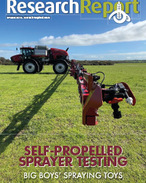This article is 2 years old. Images might not display.
The Bureau moved from an El Niño watch to alert in early June to a declared El Niño yesterday after three of the four criteria were met, including a sustained response in the atmospheric circulation above the tropical Pacific.
The last time Australia encountered both El Niño and a positive IOD was in 2015. BOM climate manager, Dr Karl Braganza, said both climate drivers tend to draw rain away from Australia.
"Over spring, their combined impact can increase the chance of below average rainfall over much of the continent and higher temperatures across the southern two-thirds of the country," Dr Braganza said.
"The Bureau's three-month forecast for Australian rainfall and temperature have been indicating warm and dry conditions for some time.
"An established El Niño and positive IOD reinforces our confidence in those predictions. Based on history, it is now also more likely that warm and dry conditions will persist over eastern Australia until autumn."
El Niño events increase the risk of extreme temperature shifts, like heatwaves and hotter days. El Niño contributes to elevated fire risk over both spring and summer in south-eastern Australia, while a positive IOD also contributes to greater fire risk over southeast Australia in spring.
"Around two-thirds of Australia's driest years on record were during El Niño however, no two El Niño or IOD events or their impacts are the same," Dr Braganza said.
"El Niño is part of a natural climate cycle that affects global weather and occurs on average every three to five years."
BOM senior climatologist, Catherine Ganter, said the IOD can influence Australia's rainfall and temperature as much as El Niño.
"A positive IOD often results in below average rainfall during spring for much of central and southern Australia and warmer than average maximum temperatures for the southern two-thirds of Australia," Ganter said.
"Similar to El Niño, the IOD describes a natural climate cycle brought about by sustained changes in the difference between sea surface temperatures in the tropical western and eastern Indian Ocean."
Since reliable IOD records began in 1960, there have been around 16 positive IOD and 15 El Niño years, with both climatic events occurring at the same time record on seven years.
THREE-MONTH OUTLOOK
The Bureau's three-month outlook predicts drier than average conditions and below average rainfall are likely for much of Australia over the next few months, with warmer than average days and nights expected for almost all of the country from October to December.
It predicts a 60-80 per cent chance of below average rain for much of Australia, but chances of above or below median rainfall is roughly equal for parts of inland northern and central Western Australia, southern and central Northern Territory and much of western Queensland.
South-west WA, QLD's central coast, south-east South Australia, southern and northern-eastern Victoria and western Tasmania are twice as likely to experience unusually low rainfall (defined as the driest 20 per cent for the periods from 1981 to 2018), according to BOM.
Western and central WA and parts of central and south-eastern Australia are at least four times likely to experience unusually high maximum temperatures in the last three months of the year (equating to the warmest 20 per cent of October to December periods from 1981 to 2018), with most remaining areas three times more likely.
For the remainder of the year broad areas of Australia are also at least 2.5 times likely to experience unusually high minimum temperatures, with chances increasing to more than four times likely for parts of central WA, southern QLD, and north-east NSW.























